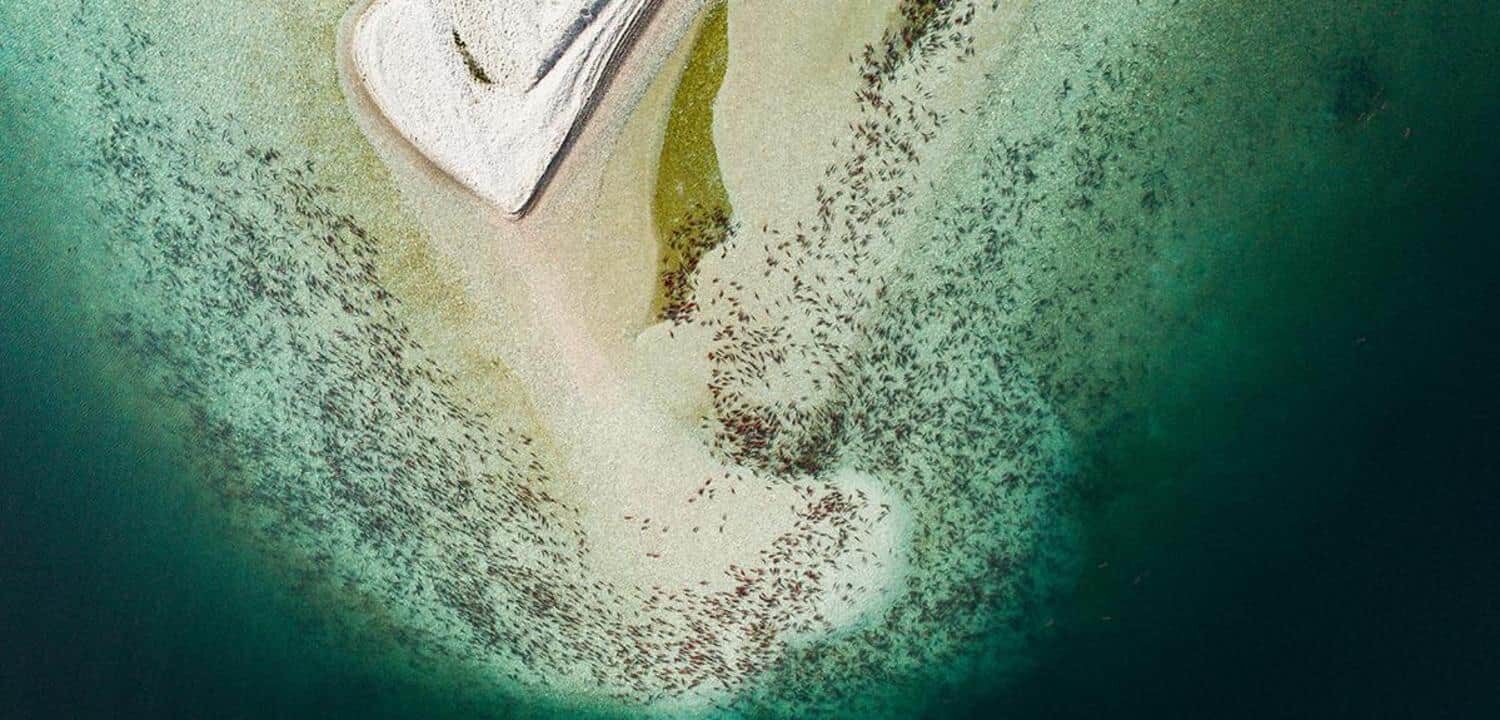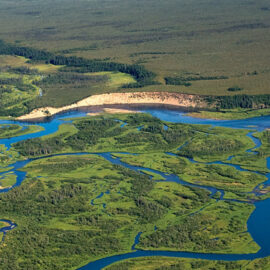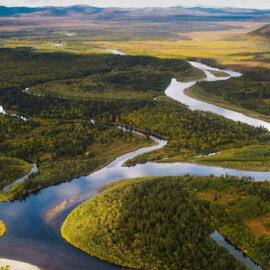The photographer’s fresh, arresting images have turned heads and fueled the campaign to stop Pebble Mine. We asked him to tell us who he is—and what makes him tick.
At the northeast end of the Iliamna Lake in Southwest Alaska, near the town of Pedro Bay, the water is so pure it’s literally drinkable.
At this end of the lake, the bottom is lined with a sand of pounded white granite. Seen from the air, the lake takes on a light green, even turquoise tint. It looks tropical. Add a thousand fire-engine red spawning sockeye salmon to the picture and the scene turns otherworldly.
“People say ‘I didn’t know there were salmon in the Bahamas,’” jokes Jason Ching, a Seattle-based photographer and videographer. “They say it’s gotta be photoshopped.”
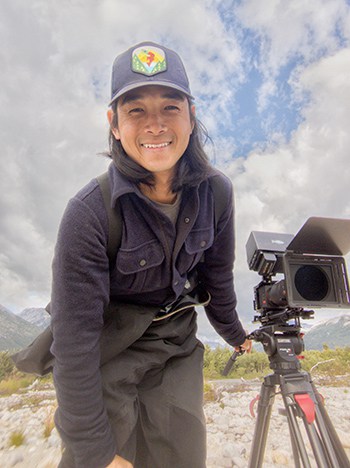
But Ching’s images are all real, captured in the countless hours he’s spent on or near the lake over the last 14 summers, equipped with a drone and underwater camera. What’s more, Ching’s photography has changed the course of history in the Bristol Bay region.
As prospects for the toxic Pebble Mine project rose during the Trump Administration and the U.S. Army Corps of Engineers nearly greenlighted it in 2020, Ching’s arresting imagery—published on everything from CNN to Fox News to Wild Salmon Center’s own campaign channels—helped turn the tide against the mine.
Wild Salmon Center followers know what happened next: the Army Corps of Engineers looked deeper at the scientific record and eventually denied Pebble a key permit. Now, the Biden Administration is proposing blocking mining on the Pebble site forever. (Click here to add your voice to this fight.)
WSC’s Oakley Brooks caught up with Ching, now 35, as he prepared to depart for another summer as a lab technician with University of Washington’s Alaska Salmon Program—which gives him access to Iliamna and more image harvesting. In particular, we wondered how this soft-spoken, unassuming guy has come to fill such a powerful niche in a national campaign.
***
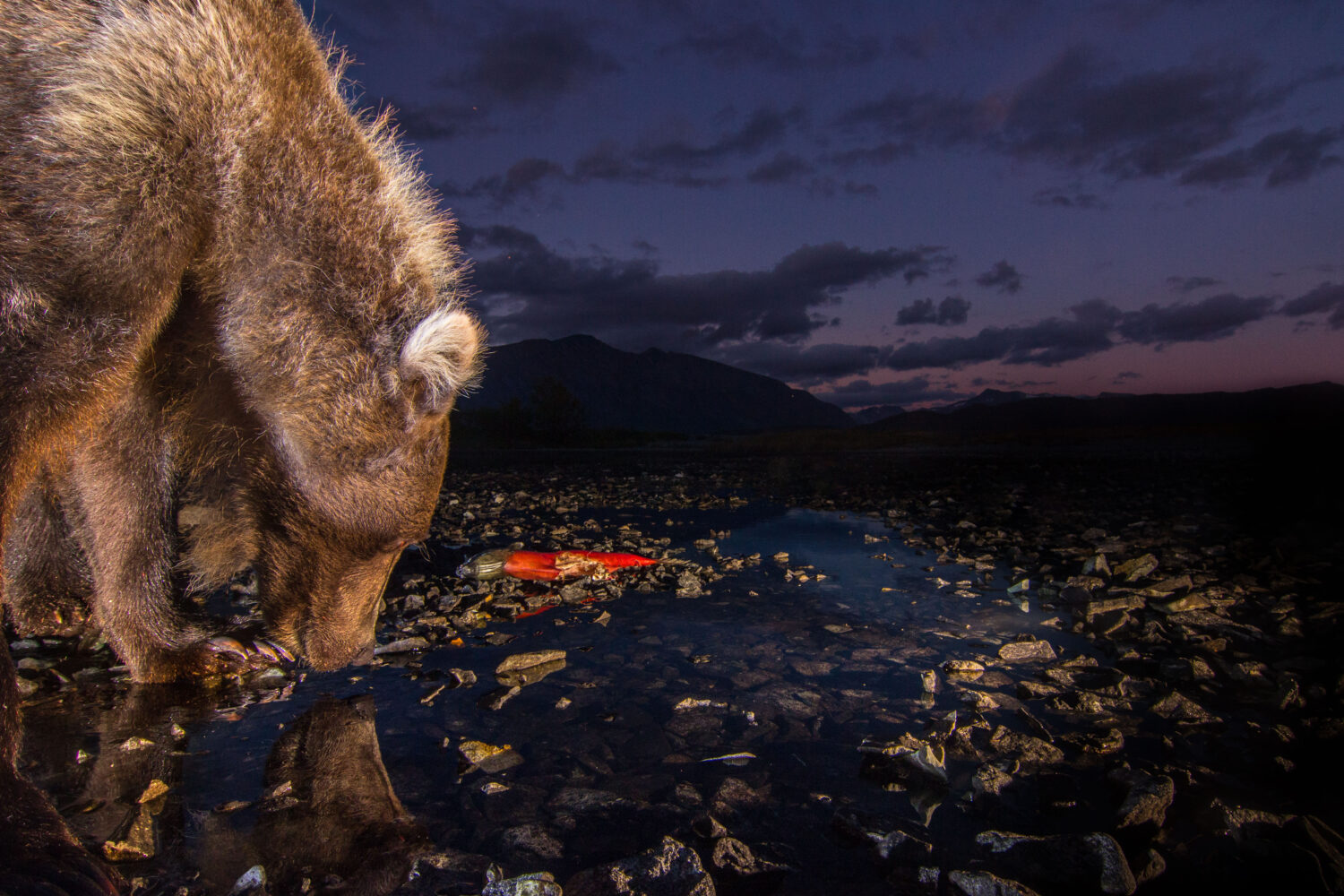
Oakley Brooks, Wild Salmon Center: When I think back over this latest chapter fighting to stop Pebble Mine, I don’t think it happens without your work. There was that 2017 CNN story, when people in Washington and across the country were starting to call out the EPA for unwinding protections for Bristol Bay. Your video was the first thing that led to that story. People were like: ‘I’ve never seen anything like this. That water. Those red fish!’ So hats off to you. It’s a testament to your artistry and knowledge of this special place that we’re here today, with a chance of protecting Bristol Bay.
Jason Ching: Taking pictures is one thing, but having the story behind it, and the movement behind it, is a huge part. And getting these images to folks like Wild Salmon Center, The Nature Conservancy, and all these other organizations that are putting out these messages. That’s been the most rewarding experience for me. So it’s a team effort, as I see it. And I’m happy to do what I can.
WSC: How did you get started with this work?
Ching: Well, my folks are both from Hawaii and both grew up in families with strong connections to the water and fishing in particular. My parents later came to the Seattle area and started their whole fishing scene out here: Puget Sound salmon, trout fishing, digging up clams, mushroom hunting and things like that. That’s the world I grew up in with my brother, 10 minutes north of Seattle in the Shoreline area. My brother and I are two years apart so we did everything together. My brother took off with recreational fishing and has really become an expert. But then at some point, while working in Alaska, I diverged from that path. I put down the rod and started picking up the camera a bit more as another way to connect with nature.
At some point, I put down the rod and started picking up the camera.
WSC: How did you first get to Lake Iliamna?
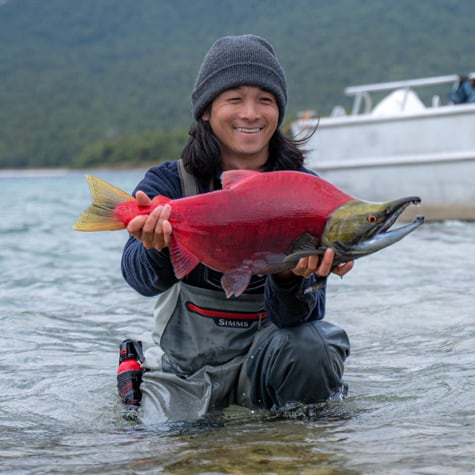
Ching: Not really knowing what to do in college, I did the fisheries program because it just felt natural for me: fish and water. In my junior year in 2007, I started with the Alaska Salmon program. They shot me up to Alaska that summer and I’ve been going up ever since.
WSC: You said at some point you put down the rod and picked up the camera. What triggered that ?
Ching: I’ve always had a passion for creating which was something that I think my mom instilled in me. My mom was one of these people who did all the arts and crafts. And my brother and I would commonly find ourselves doing things like making paper and getting messy with paints and glue when we were growing up. It was something I really enjoyed. When you get into the sciences, you’re kind of missing that element of art and creativity. And although I’ve developed a lot of creative outlets over the years from woodworking to fish prints, photography and camerawork really bridged the gap for me making a solid connection between creativity, environmental science, and nature. And that’s what drew me into the camera work. It all just clicked for me.
WSC: So now you are in this dual role: art and science?
Ching: These days, the science work has definitely scaled back quite a bit: for the most part I’m just opening and closing the research stations and helping with logistics. But I’m up there for most of the summer, and I’ve organized [the work] to be able to spend more of my free time to go out and take videos and pictures. The folks I’ve worked with have been accommodating of what I wanted to do. And I feel incredibly lucky for that. I go where I think I need to go to get good imagery to share with groups like yours.
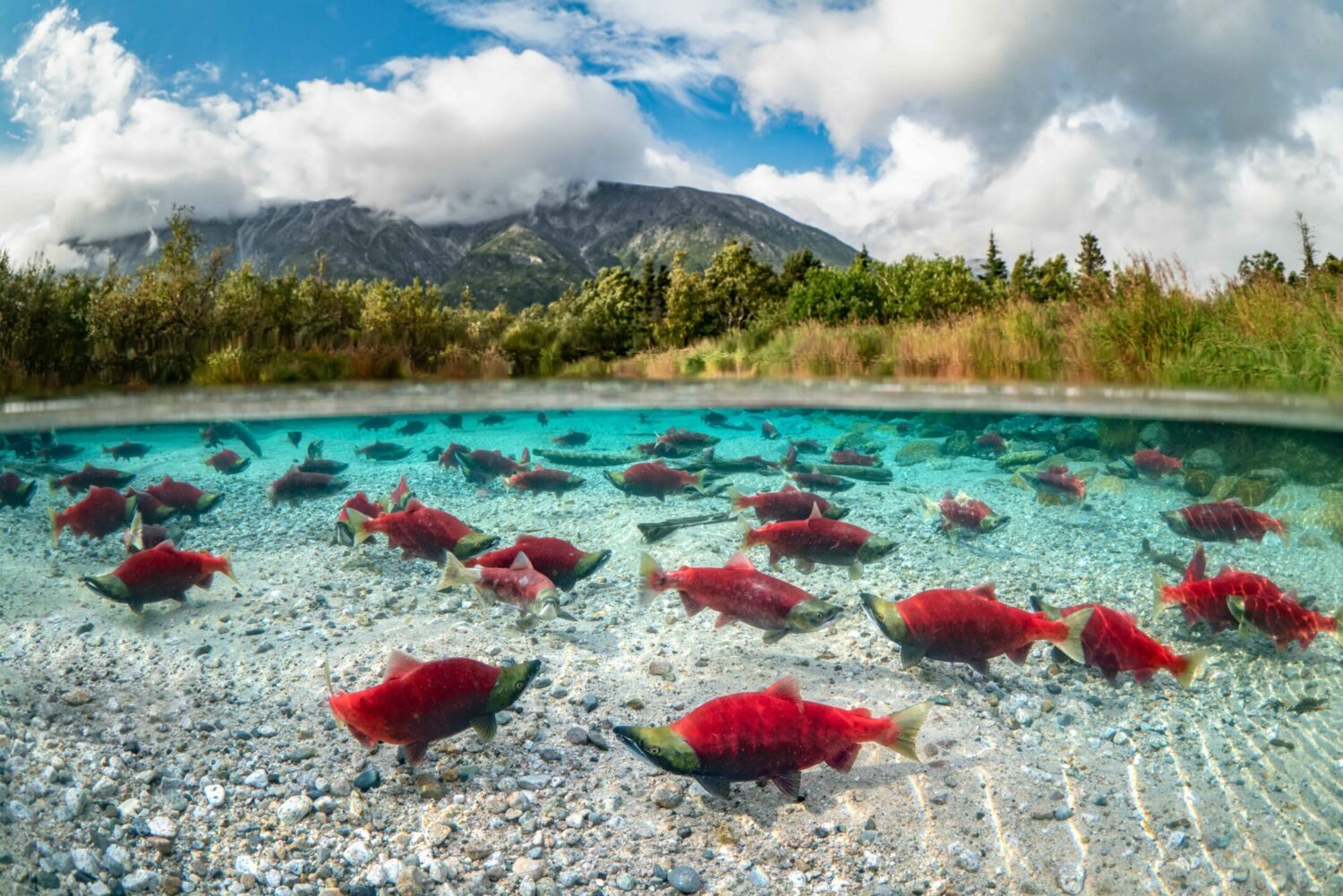
WSC: Do you have a favorite spot up there?
Ching: There’s a spot adjacent to the village of Pedro Bay, about 20 minutes from our camp, with a gorgeous, huge mountain next to it. It’s the clearest water I’ve seen in Alaska so far. The substrate is all white granite, so it just makes the fish pop all that much more. It’s been the most visually stunning place to see sockeye salmon. Certainly my favorite.
WSC: What about in Washington?
Ching: Washington has been a little more tricky to get out to find salmon. My gear is usually just getting back to Seattle on freight from Alaska and I’m getting readjusted to city life just as Washington salmon are coming in to spawn in streams. And then it’s three- or four-hour drives [from Seattle] to get to locations instead of a 10-15 minute boat ride so timing is more difficult. But with the help of friends I have pinned down some chum spots on Hood Canal and on the Olympic Peninsula for coho and steelhead runs. And also in the Skagit area, I have been trying to get shots of pink and chinook salmon runs, and trout.
WSC: What’s your relationship to Pebble Mine and the fight to stop it?
Ching: As a professional scientist I’m taught to, observe, collect data, report facts, and keep my opinions to myself. It sounds like a challenging thing, to try to say that Bristol Bay isn’t a place for a mine without saying it directly, but I’ve tried to let my photographs and knowledge of Bristol Bay watersheds do the talking in a way.
Having access to all of this research and science coming out of the area I feel like I’ve found myself in a unique position to provide really interesting and potentially little-known facets of the environment, things we’ve come to understand about these salmon habitats. I try to couple the information with engaging imagery from the very areas we study to piece together something to share with people with a hope that it provides something compelling about what makes Bristol Bay so important and special. And whether it’s the images, information, or both, I hope it allows them to develop their own reasoning on why Bristol Bay should be protected from anything that might put it at risk.
I’ve tried to let my photographs and knowledge of Bristol Bay watersheds do the talking.
WSC: In a super remote spot with nature putting on a show—do you ever cringe about the prospect of a mine?
Ching: Yeah. You’re shooting the salmon from the air and you see the grandeur of both the landscape and how the salmon are interacting with everything. And you’re reminded of how everything works out there in perfect harmony. It’s pretty wild to think that anyone would even consider risking that balance that has been lost in so many other places.
I get this drive: Okay, I gotta shoot this well because this is moving stuff for me—but for somebody else just sitting on their couch in some other state, this could be powerful, idea-changing stuff. So, what also creeps into my mind is the opportunity to bring something home that will engage people, imagery that might be useful to folks spreading meaningful messages and related research.
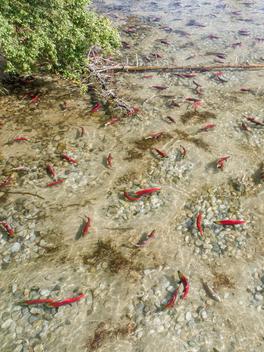
WSC: Well, it’s working. Is there anything else you want to put a punctuation mark on, in terms of why you do this and the experience of doing it?
Ching: My time in and experience in Bristol Bay has been the most exciting and meaningful chapter of my life so far. And I’m grateful for having the flexibility to explore and develop the paths that have been presented to me while working up here.
I started my camera work in Alaska with no more of an excuse other than it being a fun hobby. Early on while working there I collided with some amazing photographers who were post-docs with the salmon program at the time—Jonny Armstrong and Morgan Bond. Both inspired me to keep on trying to get that better shot. They taught me to approach nature photography by thinking of the most epic photograph and then formulating the gear and techniques to attempt to get that shot. It’s what motivates me to keep pursuing camerawork, that it can always be done differently, and the general idea that I haven’t and never will get the perfect photograph but should always pursue it.
One of my best friends, Erin Ranney, an incredibly accomplished camerawoman, has been one of my greatest sources of encouragement. People like Erin helped me make the connection that the imagery I was capturing could serve a purpose more meaningful and influential than simply being hung up on a wall. And as conservation organizations like Wild Salmon Center saw that value in my work it put me on a path that I’ve found incredibly fulfilling. I think I’m incredibly lucky to have been able to study Bristol Bay watersheds and its sockeye salmon runs as both a scientist and photographer. I’m thankful for the connections it has helped me make, and I am excited to see what it leads to next.
***
See an extended portfolio of Jason Ching’s work at jasonsching.com and follow him on Instragram at @jasonsching.
